Chad is a hidden gem in Central Africa. It has untouched landscapes and vibrant cultures. You can see the Sahara’s golden dunes and Lake Chad’s shimmering waters.
Chad is home to over 200 ethnic groups. They share stories passed down through generations. For those looking for something special, Chad offers authenticity and unique experiences.
Why visit Chad? You can trek ancient rock formations and try local dishes. You can also meet nomadic communities who have shaped the region.
This nation is more than a place. It’s a tapestry of experiences waiting to inspire. Whether you love wild beauty or cultural depth, Chad offers adventures that change how you see Africa.
Key Takeaways
- Chad’s mix of desert, lakes, and savannas creates one-of-a-kind landscapes.
- Over 200 ethnic groups make its cultural heritage deeply diverse.
- Lake Chad and the Sahara’s Ennedi Plateau are must-see natural wonders.
- It offers authentic travel experiences away from crowded tourist paths.
- Its traditions and wildlife provide rare, immersive cultural encounters.
Introducing Chad: Africa’s Beating Heart
Chad’s vast lands are full of stories. You can find golden deserts and vibrant cultures here. It’s a place where old traditions meet wild nature.
Chad’s Geographical Significance
Chad is at the heart of Africa, between North and Central. It shares borders with six countries. Its land is as varied as its people, from Lake Chad to the Sahara.
The Historical Evolution of Chad
- Kingdoms of old: Ancient empires like Kanem-Bornu thrived here, shaping trade routes.
- Colonial era: French rule from 1900 to 1960 left architectural traces in cities like N’Djamena.
- Modern identity: Since independence in 1960, Chad has preserved traditions while embracing global connections.
Why Chad Deserves Your Attention
Chad’s tourist attractions are unique:
- Natural wonders: Trek the Ennedi Plateau’s canyons or sail Lake Chad’s serene waters.
- Cultural richness: Celebrate with nomadic festivals or explore bustling markets.
- Adventure: Sand-boarding in the Sahara or tracking wildlife in Zakouma National Park.
Chad is more than a place to visit. It’s a call to explore Africa’s wild heart. Every spot has a story, from ancient rock art to today’s strength. This land of contrasts offers unforgettable journeys.
The Unique Geography That Defines Chad
Chad’s landscapes are a dream for travelers. They mix extremes into a beautiful mix of natural wonders. From the Sahara’s golden dunes to the south’s lush wetlands, Chad has Unique Features of Chad you won’t find anywhere else.
Whether you’re hiking volcanic peaks or kayaking in river deltas, Chad’s geography makes adventures unforgettable.

- Northern Sahara: Sand seas and the Tibesti Mountains, where Mount Emi Koussi soars over 11,000 feet.
- Central Sahel: A transitional zone of acacia trees and seasonal lakes, perfect for wildlife spotting.
- Southern Savanna: Dense forests and the iconic Lake Chad, a lifeline for migratory birds and local communities.
| Region | Key Features | Things to do in Chad |
|---|---|---|
| Northern Sahara | Volcanic rock formations | Hiking in Tibesti, camel treks |
| Central Sahel | Seasonal wetlands | Birdwatching, cultural homestays |
| Southern Savanna | Rivers and forests | Boating tours, national park safaris |
Adventure seekers can explore the Travel guide highlights like the Ennedi Plateau’s sandstone arches or the Chad National Park’s wildlife. Each zone offers unique experiences. Chad’s landscapes are more than a backdrop—they’re the heart of the journey.
What Is The Speciality of Chad: Cultural Diversity Beyond Compare
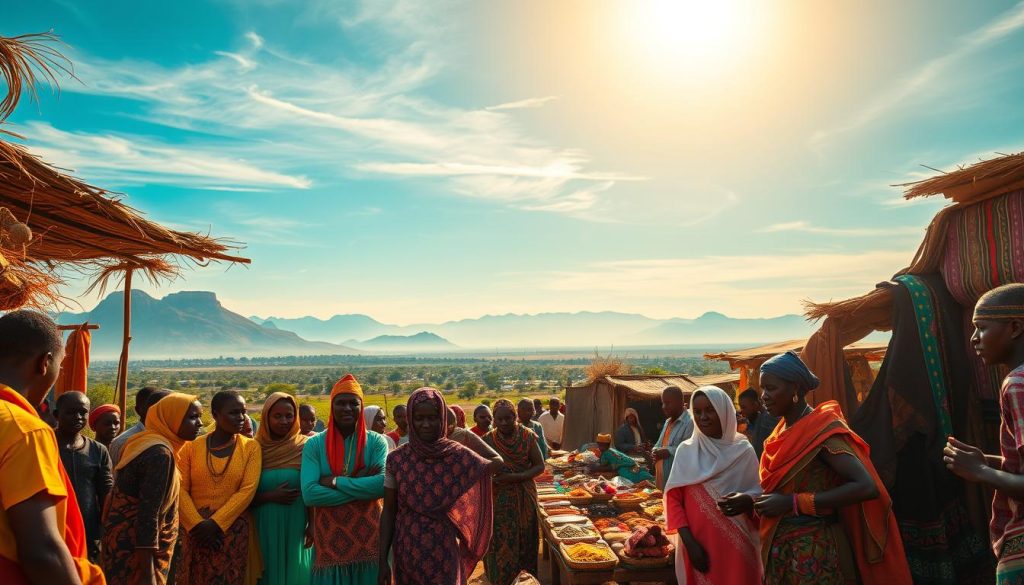
Chad’s culture is a mix of traditions, languages, and beliefs. It spans from the rainforests to the deserts. Over 200 ethnic groups live together, each with their own customs.
Solo travelers find stories of strength and unity here. They see how Chad is a crossroads in Africa.
Chad’s Ethnic Mosaic
- Sara farmers in the south work together on farms.
- Toubou nomads from the Tibesti Mountains share stories under the stars.
- Zaghawa herders mix poetry with everyday life in eastern Chad.
Languages and Communication
French and Arabic are official languages. But, over 100 local languages like Sara and Kanembu are also spoken. Solo travelers can say “Allah akbar” (God is great) or “Mbollo” (Thank you).
A local saying is, “Language is the key to the soul of a people.”
Learning a few words can help you connect more.
Religious Practices and Spiritual Traditions
Islam, Christianity, and old beliefs live together in peace. Markets are filled with Chad Culture like the garga healing dances. Festivals like the Fête de la Libération mix music, dance, and faith.
Places like the Djoha rock paintings show ancient traditions. For solo travelers, exploring this diversity is a journey into our shared heritage. Experiences like drinking millet beer at a Sara ceremony or following desert routes with nomads are unique.
Lake Chad: The Ecological Wonder
Lake Chad is a key part of Chad Attractions. It has changed lives and landscapes for thousands of years. Once it covered 25,000 square miles, now it shows strength against environmental changes.
This freshwater area has floating islands made by locals. It’s full of birds, crocodiles, and fish found nowhere else.

Now, the lake faces problems from climate change and human actions. But, people work with scientists to fix wetlands and share water. Visitors can go on eco-tours with local guides.
They can see fishing villages or kayak through channels. These tours help Eco-friendly travel.
- Use reusable bottles to reduce plastic waste
- Stick to marked paths to protect fragile ecosystems
- Book stays with eco-certified lodges
People wonder, Is safe to visit? Authorities say to listen to local advice and travel with licensed guides. By respecting traditions and habitats, visitors can enjoy this wonder and help it survive.
“The lake’s future depends on balance—between people and nature.” —Local conservation leader Fatima Diallo
Desert Landscapes: Exploring the Sahara’s Secrets
Chad’s deserts are more than empty lands. They are full of adventure and hidden beauty. Here, you can see ancient art and climb volcanic peaks.
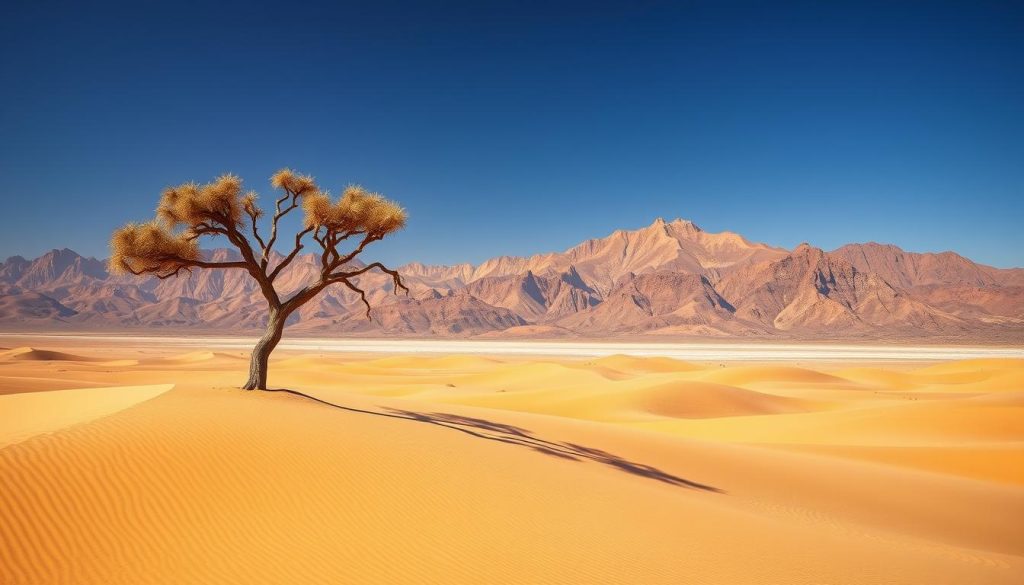
Ennedi Plateau and Its Ancient Rock Art
The Ennedi Plateau’s cliffs hold secrets of the past. Over 3,000 drawings show giraffes, cattle, and people. It’s like stepping back in time.
Adventure seekers love hiking here. Places like Guelta de l’Ourarou are desert oases. They are where nomads and animals meet.
Tibesti Mountains: Volcanic Wonders
Emi Koussi, Chad’s highest peak, is a volcanic wonder. It has crater lakes, lava tubes, and fields of obsidian. It’s a place unlike any other.
Guides say the Injour-Abba lava dome is a must-see. It’s perfect for those who love geology.
- Emi Koussi: Highest peak in Chad
- Yadoubous: Active volcanic vents
- Ennerkoucrat: Crater lake for stargazing
Desert Wildlife and Adaptation
Life in the desert is amazing. Addax antelopes roam sand seas. Sandfish lizards move underground.
Nomadic guides tell tales of desert foxes. They survive without drinking water.
| Region | Key Features | Where to stay in Chad |
|---|---|---|
| Ennedi | Rock art, hiking routes | Bedouin-style camps |
| Tibesti | Volcanic formations | Mountain lodges |
| Wildlife zones | Addax habitats | Guided eco-camps |
“The Tibesti’s silence is broken only by wind and your own heartbeat—it’s a humbling adventure.” – National Geographic Explorer
Chad’s Culinary Traditions: A Feast for the Senses
Chad’s food is a mix of flavors from its lands and people. You’ll find hearty stews and fragrant flatbreads. Each dish shares stories of strength and togetherness.
For families visiting Chad, meals are special moments. Try bouille, a millet porridge with spicy daraba or tender jarret de boeuf. Also, enjoy kisser, a sourdough flatbread with fresh okra or dried fish.

Nomadic traditions shape northern dishes, with zam Zam (millet couscous) and grilled meats. Near Lake Chad, you’ll find fresh tilapia and peanut sauces. Here’s how to enjoy it like a local:
- Visit N’Djamena’s Marché des Artisans for grilled gour (African eggplant) and spices.
- Join tea ceremonies—three cups mean friendship, a lovely way to share.
- Ask for “le plat du jour” to find daily specials at family places.
Kids will love àla, sticky millet snacks. Vegetarians can enjoy mbembe (plantain stew). Chad’s food turns meals into unforgettable memories. Bon appétit!
Traditional Crafts and Artistry in Chad
Chad’s traditional crafts are more than just decorations. They are pieces of history and culture. Artisans turn simple materials into beautiful works of art. These crafts make great souvenirs that show respect for Chad’s traditions.
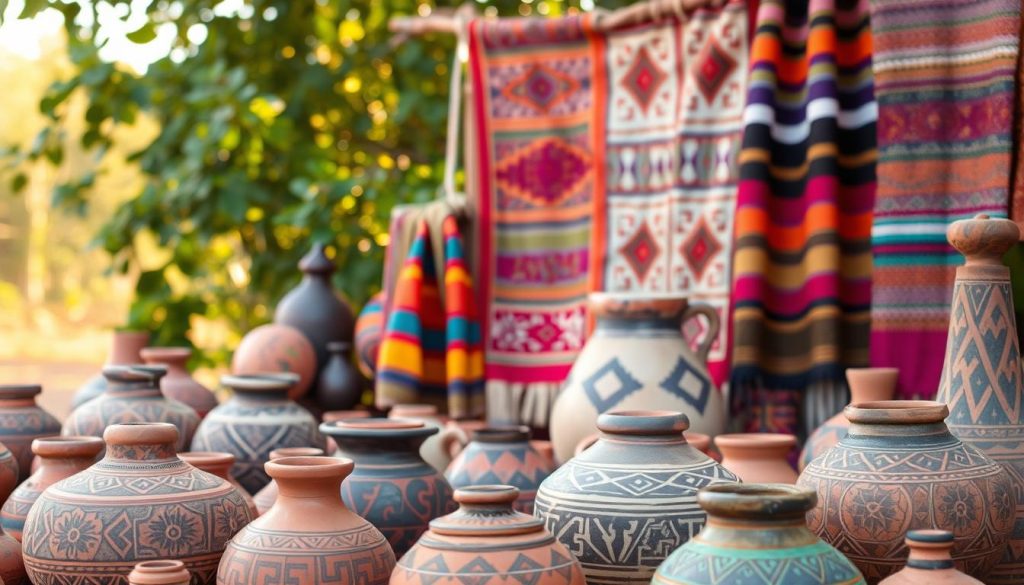
Pottery and Ceramics
Sara potters make bowls and jars from clay. They add patterns that tell family stories. Look for these in village workshops for real craftsmanship.
Weaving and Textile Arts
Indigo-dyed cloths and embroidered tunics share stories through threads. The Baguirmi weave silk robes for ceremonies. Fulani dyers make bold stripes for weddings. Markets have colorful fabrics for good deals.
Jewelry and Personal Adornment
Tuareg silversmiths make crescent pendants. Hausa artisans string cowrie shells into necklaces. Each piece has its own meaning, like beads showing marital status.
Here are some Shopping tips to find great deals:
- Visit morning markets for fresh stock and lower prices.
- Touch the fabric—handwoven textiles feel thicker than machine-made alternatives.
- Bargain gently; many artisans welcome dialogue over fixed.
Buying these crafts helps keep Chad’s traditions alive. You can take home a piece of Chad’s soul, ethically and affordably.
Wildlife Encounters: Chad’s National Parks and Reserves
Chad Attractions like Zakouma National Park offer unforgettable wildlife adventures. This park’s comeback from past poaching threats makes it a conservation triumph. Spot elephants, lions, and hundreds of bird species on guided game drives.
Nearby Manda National Park along the Chari River blends wetland beauty with rare hippo sightings. The Ennedi Natural Reserve adds desert-adapted wildlife like gazelles and cheetahs.
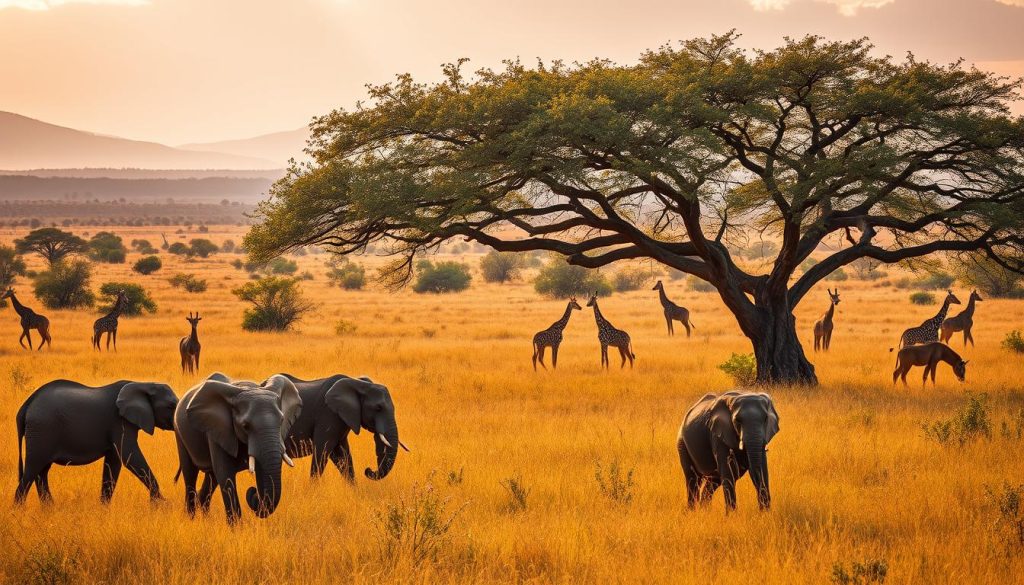
Embark on walking safaris or birdwatching tours to connect deeply with nature. Luxury travel experiences await at camps like Camp Nomade in Zakouma, where canvas tents meet modern comforts. These lodges provide expert guides and night game drives for unique perspectives.
- Zakouma’s dry season (December–May) offers prime wildlife viewing
- Bring telephoto lenses for bird photography
- Respect animal behavior by staying in vehicles
Prepare wisely: choose the best travel insurance covering emergency evacuations in remote areas. Look for policies that include trip interruptions and medical coverage. Pack light clothing and sun protection for the arid climate.
Chad’s parks balance adventure with conservation. Whether tracking buffalo herds or savoring starlit savannahs, these reserves promise encounters you won’t find elsewhere. Plan responsibly to protect these fragile ecosystems while creating memories that last a lifetime.
The Nomadic Way of Life: Following Ancient Traditions
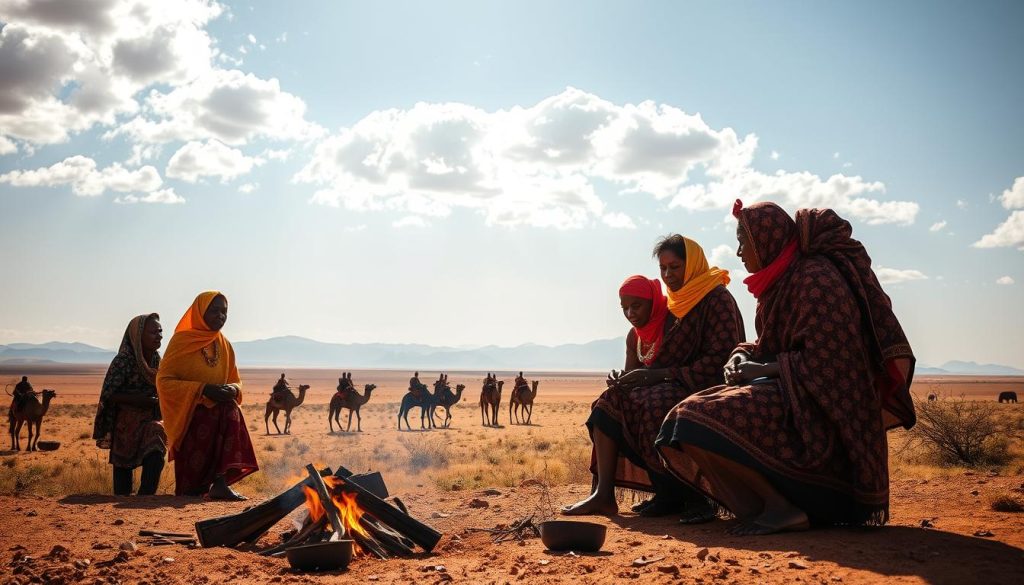
Nomadic traditions deeply shape Chad Culture. The Wodaabe and Fulani peoples live this way, moving with their herds. Their Gerewol festival celebrates beauty and community.
These groups live in harmony with nature. Their way of life is as old as the deserts they inhabit.
Wodaabe and Fulani Cultures
The Wodaabe are known for their beauty standards. They hold the Gerewol festival every year. This festival keeps old customs alive through dances and contests.
The Fulani manage huge herds. They mix Islamic traditions with their pastoral life. Both groups show Chad Culture’s strength and creativity.
Seasonal Migrations and Celebrations
Nomads move with the seasons. They follow rain and grass. Celebrations like Cure Salee mark these times.
These events bring communities together. They celebrate with music and feasting. They are a living history, showing how nature guides their lives.
Preserving Nomadic Heritage in Modern Times
Climate change and modern life threaten these traditions. But, places like the Hidden spots of Ennedi Plateau offer a chance to connect with nomads. Before visiting, you must get the right Visa requirements for Chad.
Visitors need permits for some areas. It’s important to follow embassy guidelines.
- Gerewol Festival: Annual gathering of the Wodaabe
- Key Celebrations: Cure Salee, Gorowe, and others tied to seasonal shifts
- Permits Required: Check embassy guidelines for nomadic region access
Traveling with respect helps these communities. Learn about visa rules and interact ethically. This way, you can protect these ancient traditions.
Planning Your Chad Adventure: Practical Travel Tips
Planning a trip to Chad means getting ready well. Use a detailed travel guide to plan your trip. You might explore Lake Chad or trek the Sahara. Follow these steps for a smooth and memorable trip.

- First, learn how to plan a trip to Chad. Check visa rules and health tips early. Flights arrive in N’Djamena. Overland travelers can come from Cameroon or Libya.
- Book your stay and guides 6–8 months early. Local guides know places like Ennedi’s rock art sites well.
A good travel packing list is essential. Desert travelers need sun protection: light shirts, hats, and sunglasses. Don’t forget a water bottle and electrolyte tablets. For rainy season, bring waterproof shoes and a small umbrella.
- Carry a portable charger and a satellite phone. Cell service is weak in rural areas.
- Wear modest clothes in conservative places.
- Have a first-aid kit with malaria meds and anti-diarrheal pills.
“Always double-check border-crossing hours. Flexibility is vital in remote areas,” says a seasoned traveler.
Get permits for national parks like Zakouma early. Work with licensed guides for safaris or desert trips. With good planning, Chad’s wild beauty is yours to explore.
Best Time to Visit Chad: Seasonal Considerations
Planning your trip to Chad is all about finding the right mix. You want adventure and comfort. Seasons play a big role in your journey.
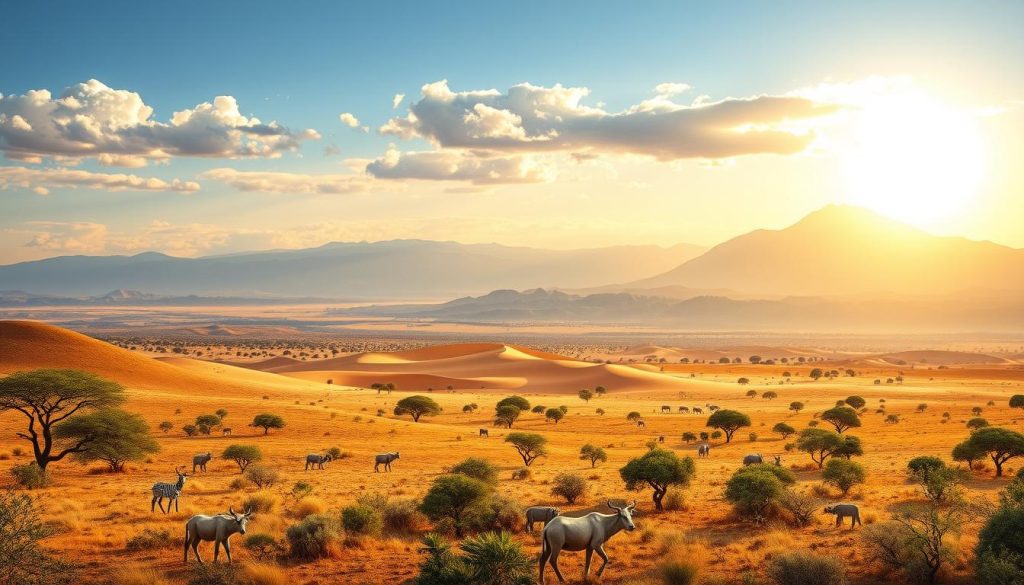
Dry Season Advantages
October to April is the best time to visit. The weather is perfect, and you can explore easily. Zakouma National Park is a must-see during this time.
Remember to pack clothes for both warm days and cool nights. This way, you’ll be ready for anything.
- Oct–Feb: Explore Ennedi Plateau’s rock art without mudslides.
- Mar–Apr: Track elephants in Bahr Salamat Faunal Reserve.
Navigating the Rainy Season
May to September is rainy. The north turns green, and prices go down. It’s a chance to save money.
But, be ready for muddy roads. N’Djamena is a great place to stay for cultural fun when places are hard to reach.
“The rainy season offers solitude—you’ll have trails to yourself,” says a local guide.
Festival and Cultural Event Timing
Plan your trip around big events. The Gerewol Festival in September is amazing. And don’t miss the Independence Day parade in August.
Traveling in May or September can save you money. You can visit Niger or Cameroon then. Book your campsites early in October for the best deals.
Safety and Health Considerations for Chad Travelers
Planning a trip to Chad? Start by asking: Is Chad safe to visit? With the right prep, many spots are safe. Stick to places like N’Djamena and go on guided tours. Always check the latest travel advisories before you go.
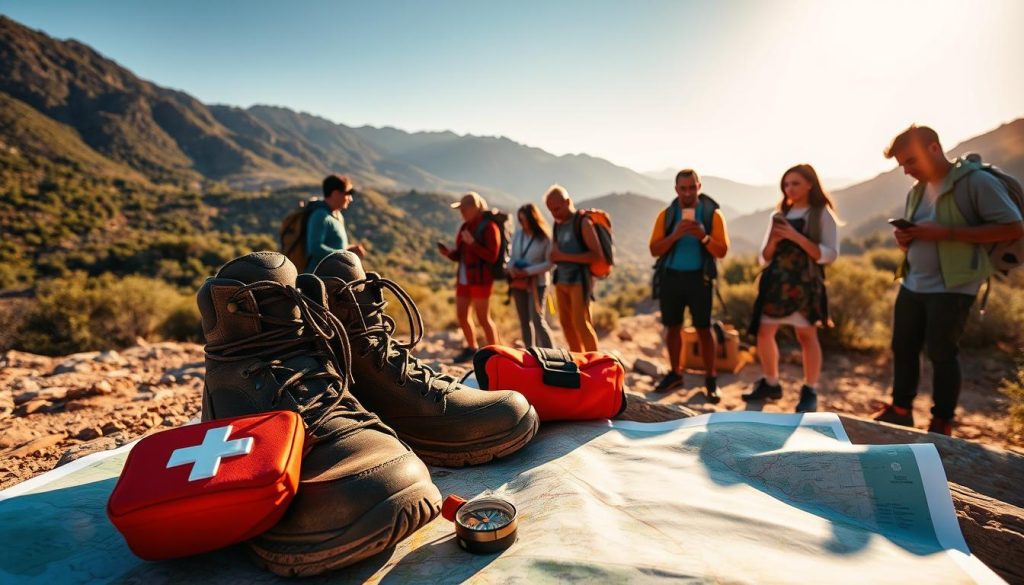
Health is very important. You need shots for yellow fever and meningitis. Use DEET to keep bugs away and carry water to stay hydrated. Don’t drink tap water; use bottled or treated water instead.
Travel scams to avoid include fake guides at borders and high taxi prices. Always agree on prices first and check your permits. Be careful of fake officials asking for money; check with your embassy if you’re not sure.
Getting the best travel insurance is smart. Look for policies that cover medical evacuations and remote areas. Here are some top picks:
- Allianz: Offers evacuation coverage and 24/7 help
- World Nomads: Good for adventure activities
- Travel Guard: Covers political unrest
| Insurance Provider | Key Coverage | Unique Features |
|---|---|---|
| Allianz | Medical emergencies, theft | Remote area access |
| World Nomads | Adventure sports, trip cancellations | Real-time claims support |
Stay informed, stay insured, and travel smart. Chad’s beauty is waiting for those who are ready.
Accommodation Options: Where to Stay in Chad
Chad has many places to stay, from cities to deserts. Here’s how to pick the best spot for your trip.
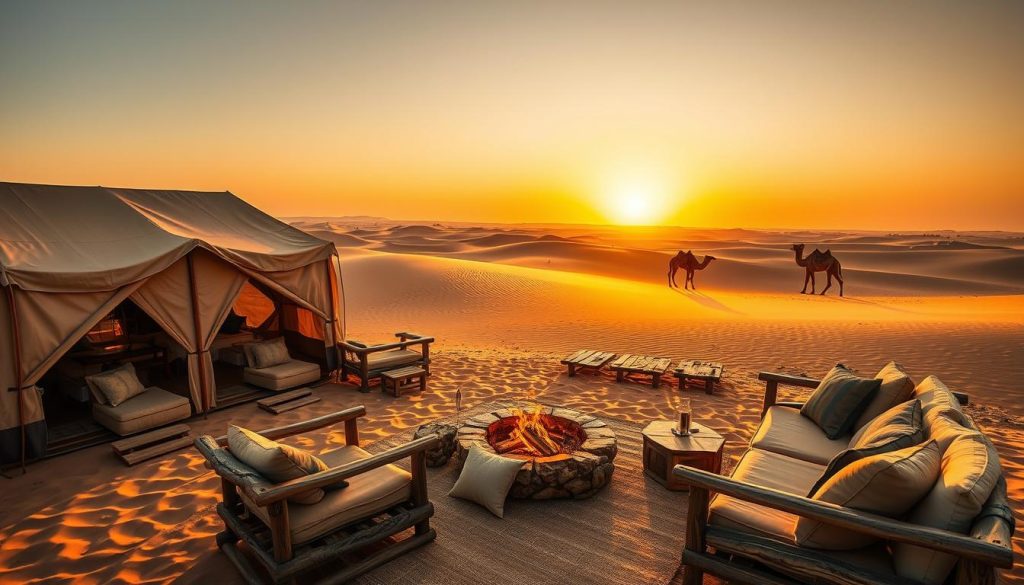
In N’Djamena, you can find luxury hotels like the Hilton N’Djamena or Radisson Blu. They have modern comforts. But, if you’re on a tight budget, try guesthouses in Cité du 28 Avril for less than $30 a night.
Stay near markets or the presidential palace for easy city access.
- Budget travel tips: Look for deals in May–August or stay with locals for a real experience.
- For a good balance, try Ibis or Novotel. They’re not too expensive and are close to museums and the Chari River.
Urban Comforts
N’Djamena’s hotels are great for seeing the city’s markets and old buildings. The Hôtel Tchad has amazing views from its rooftop. For a more affordable stay, try Guesthouse Oubangui for tasty meals.
Rural and Desert Stays
For a taste of rural life, stay in Bébédjia. Community-run guesthouses offer tours to Lake Chad. Camping in the Sahara? Saharien Expeditions has luxury tents and meals. Or, rent gear locally for a budget stay.
“Sleeping under stars in the Ennedi Gorges was magic—no phone signal, just silence.” – Sarah, desert explorer
Desert Luxury
In Tibesti, find luxury camps with solar tents and hikes to volcanoes. For a budget option, camp at Fada Billi. But, always get a local guide.
Getting Around Chad: Transportation Insights
Traveling in Chad means being flexible and planning well. Public transport in Chad often uses shared bush taxis. These are minivans and trucks that connect towns. They are cheap but very crowded.
Domestic flights by Air Chad link big cities like N’Djamena to Faya-Largeo. But, their schedules can change a lot. Renting a 4WD car gives you freedom but be careful on the rough roads. For most, booking private transfers or tours is the safest choice.
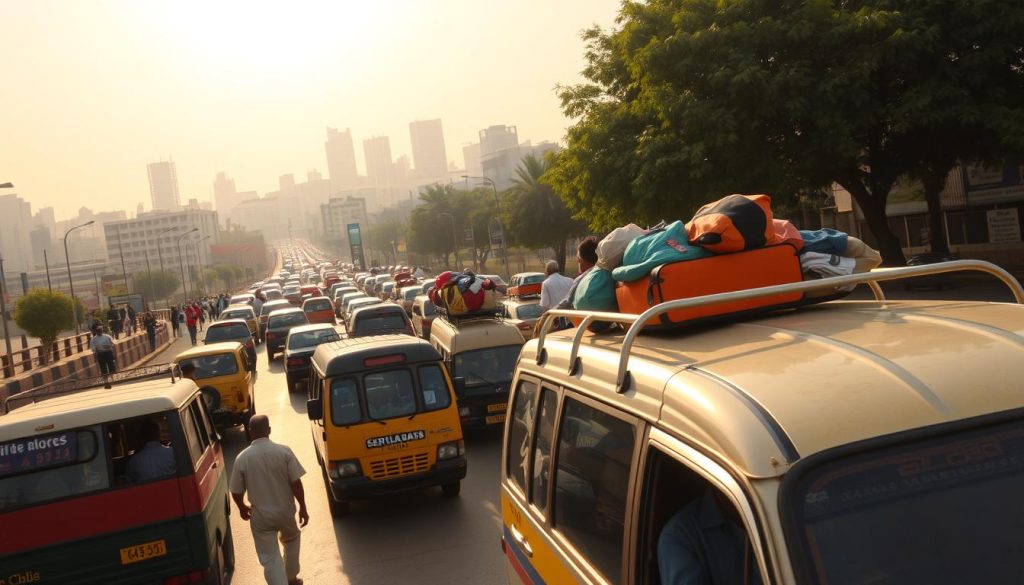
- Travel hacks for comfort: Book taxi seats early to get the best ones. Bring snacks and water—stops are rare.
- Always check if there’s enough fuel before long drives in remote places.
- Use trusted agencies for car rentals; make sure the 4WD is good for desert routes.
“Bush taxis are chaotic but unforgettable. Ride with patience and an open heart.”
Travel scams to avoid include drivers charging more for foreigners or “guides” wanting too much money for tours. Always check metered fares in N’Djamena and have cash for informal payments. Be careful at airports—only use authorized agents. With these tips, even the toughest roads become part of the fun.
Responsible Tourism: Respecting Chad’s People and Environment
Exploring Chad’s rich Chad Culture and natural Chad Speciality landscapes is key. Mindful travel choices are important. By choosing Eco-friendly travel and respecting culture, visitors can have real experiences. They also help protect Chad’s heritage.
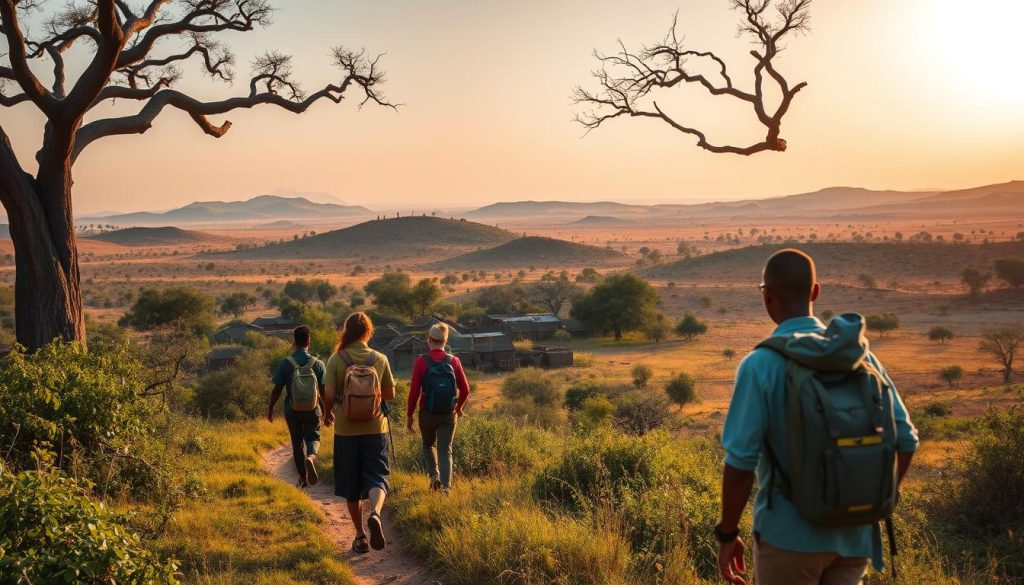
- Wear modest clothing covering shoulders and knees in public spaces.
- Always ask permission before photographing people; sharing photos later builds trust.
- Learn phrases like “As-salamu alaykum” (Peace be upon you) to honor local customs.
Environmental Conservation Efforts
| Initiative | Goal | Visitor Action |
|---|---|---|
| Sahel Reforestation | Combat desertification | Join guided planting programs |
| Lake Chad Cleanup | Protect wetland ecosystems | Use reusable water bottles |
Supporting Local Communities Through Tourism
Every dollar spent locally helps communities. Choose:
- Homestays in villages like Béni Ounáïf
- Artisan cooperatives in Moundou
- Tours led by certified local guides
Small actions like fair haggling and respecting sacred sites make travel special. Chad’s traditions grow when visitors respect them.
Conclusion: Embracing Chad’s Timeless Charm
Chad is special because of its wild beauty and rich culture. It’s perfect for those who want real experiences. You can see the Sahara’s dunes and Lake Chad’s wetlands.
There are over 200 ethnic groups here. Families can learn about nomadic life or see animals in places like Zakouma. There, rhinos live wild and free.
Visiting Chad is like entering a world of ancient stories. You can see Ennedi’s rock art and see volcanoes in Tibesti. Traveling here helps local people through crafts and staying with families.
Even though there are challenges, seeing Chad’s traditions is worth it. It’s a chance to see something truly unique.
Now is a great time to visit Chad before it gets too famous. Every sunset or meal of millet dishes is unforgettable. Chad’s charm is waiting for you, where you become part of its history.
